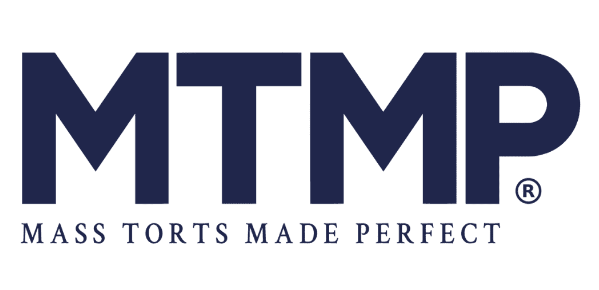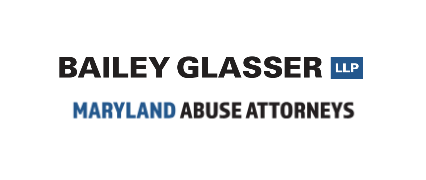Susan Barfield (00:00):
Hello everyone. Thank you for joining another Case Works stream. Super excited today to be joined by Cassidy Lewis. Cassidy, thanks so much for taking time to connect with me and our audience and we’ll quickly just want to share, and I’m interested to learn a little bit more about your background, but just for everyone to know, Cassidy is the Chief Marketing Officer at Cooper Hurley Injury Lawyers. And so Cassidy, tell us a little bit about yourself, your background, how did you even get into marketing and in the personal injury space?
Cassidy Lewis (00:35):
Sure, sure. So yes, I am Cassidy Lewis. I have been the chief marketing officer here at Cooper Harley Injury Lawyers going on five years now. Outside of that, I have a wonderful husband and two babies at home. I got into the marketing space, I was actually an accounting major when I was in college, which is crazy. And then when you take business classes you end up taking one of each. And my marketing professor was like, “Hey, you need to try out marketing.” And I was like, “I don’t want to do commercials.” He was like, “No, Cassidy, just come to some more of my classes.” And I fell in love with it. I fell in love with it.
(01:18):
And so I have been in the marketing field going on about 14 years. I think I’m like 13 and some change. Got into it very young. I got into the PI field specifically. I actually had a job interview with another law firm, didn’t get it. And a year later they referred me to Cooper Hurley Injury Lawyers. They said, “Hey, we have this girl that we interviewed about a year ago. We really liked her. The person they picked was a better fit, but she was really good.” And so they called me like, “Hey, you want to come in for an interview?” I’m like, “Who are you?” So that’s how I got in the PI field and I love legal marketing.
Susan Barfield (02:01):
Yeah. Well that’s a cool story. One of the questions and something I’m interested to understand a little bit more is just your approach of building a marketing strategy for the PI firms.
Cassidy Lewis (02:14):
Yes. So if I had to map out how we build strategies here at Cooper Hurley Injury Lawyers, there are really four steps, three solid ones, and then the last one. So the first one is research, that’s a very important step. From the research, we build our campaigns. We look at our campaigns, and then we build our KPIs, our key performance indicators. And then the last step is another step that gets missed a lot is redoing it all again. Sometimes I’ve seen strategies implemented and they work so people leave them alone. But what I have found is that if there’s some sort of system based around, “Okay, we need to look at this one more time and can we better this? And that KPI is great, but what if we could increase it by 5%, or 12%,” or whatever that looks like. So we do just a full map, the research, the campaign, the KPIs, and then re-doing everything all again.
Susan Barfield (03:23):
Talking a little bit about research, how does the data and the research fit in to marketing?
Cassidy Lewis (03:29):
Oh man. If I had to list one step that gets missed, most often it’s the research piece. But it really has to be where you start, or else you’re shooting in the dark. There are so many different spaces where we do research. So we do that pre-intake data like, “What’s happening in my area, what’s happening in my city, what are the worst intersections?” And that’s just something you get from dmv.com. Those are the intersections then that I need to write about in my blog. We do intake research. So the intakes that call us, what are they saying when they call us? Where are they calling us from? Both demographic research and psychographic. We do client research. We have a really large attorney marketing campaign, or strategy. We do a fair amount of attorney research as well. But it really does have to be the starting point for you.
Susan Barfield (04:29):
I’m sure firms, and I’m sure you talk with people that have never done marketing. And so if they’ve never done marketing, what do you tell them about the market research? How do they start collecting that and actioning on that data?
Cassidy Lewis (04:42):
So they oftentimes have the data, they may not recognize it. So if 50 intakes call your office a month for 12 months, well then you have 600 pieces of data that you can pull from. And so sometimes it is the easiest data to pull is demographic data. Where do they live? Maybe what’s their age? Are they male or female? Is there an ethnicity that your firm skews toward? That’s just some basic stuff. But then you go into building your avatar. Well, and that comes from client conversation, finding out things like we talk to primarily moms, or we talk to primarily women in this city that are at this age. I think a fair amount of them are moms.
(05:28):
So then you start to build that avatar. Same thing with attorney research. What do your attorney referrals look like? We were under the assumption that we needed to target smaller PI shops. We are exclusively personal injuriy. So we said, “Okay, it’s these smaller PI shops that need a bigger firm like us to handle those big cases.” It was true for some, but they were essentially offended. They’re like, “We can handle cases.” And so we shifted and ended up targeting basically every practice area that just doesn’t do PI.
Susan Barfield (06:09):
When we spoke a couple of weeks ago, you mentioned a little bit, and I was hoping you would elaborate a little bit more on how you leverage focus groups.
Cassidy Lewis (06:18):
Yes. So we did our first in-person focus group about a year, year and a half ago. I will say that I would use this information for branding strategies like TV. One, it is a little pricier, the in-person ones are a little pricier, but we allowed it to shape our Super Bowl campaign. So we had Super Bowl commercials for two years in a row. So the first one we didn’t do a focus group for, but the second one we did. And that is just such good qualitative data. They don’t know that you’re there, you’re in another room watching them live, or somewhere else watching them live. It can hurt your feelings, the stuff that they’re saying, because they show the group of people all of your commercials and campaigns.
(07:15):
But because we skew women, we built our Super Bowl campaign around what the women in the room were saying. They wanted to know that we cared about them, where the men, they loved those hammer like commercials, those money, money, money commercials. And there’s nothing wrong with that, but it gave us a foundation for all of our marketing. It gave us a really good foundation. And there are online focus groups that you can do as well that don’t cost as much. We’re using that right now for our jingle. But those in-person focus groups are great. And you do one, you may have to do another one for five or six years.
Susan Barfield (07:57):
And then how do you look at the data at post those focus groups to determine whatever marketing strategy you implemented? How successful was that? How do you look at that?
Cassidy Lewis (08:10):
I’m sorry. So you said after the focus group?
Susan Barfield (08:12):
Yeah. So once the focus group is done and you’re assessing and looking at all the information that was provided to you from the focus group. And then I guess you roll out some new marketing. How do you look to see if what you implemented actually made a difference and connected and you spoke to the target audience?
Cassidy Lewis (08:36):
Sure. So the thing about focus groups, it’s all qualitative data. It’s very subjective. And so we did things like word clouds where, “Okay, this word was repeated,” or “this phrase was repeated often,” things like that. We had to do feedback. So asking people like, “What’d you think about our commercials?” “Oh my god, these were the best commercials ever.” Compared to previously, “Oh yeah, I saw you guys. I see you guys everywhere.” The conversation shifted some and went from, “I see you guys everywhere,” to, “Yeah, I see you everywhere, but now this commercial has impacted me.” And then we also looked at some of that quantitative data. So did we get an increase in intakes? Did we get an increase in referrals? When the intakes are calling, did they mention our commercials? Did they mention how great they were?
Susan Barfield (09:28):
Yeah, no, that’s great feedback. And in addition to the focus groups, you also mentioned client experience survey. So what is something you never expected to learn from those client experience surveys?
Cassidy Lewis (09:41):
So we initially set the surveys up, and we did ours by team. So attorney, paralegal, legal assistant, that’s how we’re structured. And so the client gets the survey, chooses their legal team, cause ours are anonymous, chooses their legal team and just two or three questions, very simple with a comment section. We expect to be able to see which teams are serving their clients best on the service side.
(10:13):
We ended up finding out that our clients loved their paralegals, but they didn’t trust them like they trusted their attorneys. And it wasn’t that they thought they were liars of course, but it was when my paralegal tells me I need to do something, well I would rather hear that from the attorney. And it is such that nurse-doctor relationship. You want the doctor share with you something big is about to happen, or “We need to do X.” And so again, it just shifted the way that we began communicating with clients. And we know internally that the attorneys looking at the files every 30 days. We know internally that everything that the paralegals are saying to the clients is green lit from an attorney. We know those things but the clients do not.
Susan Barfield (11:11):
So interesting. And it all goes back to the research and the data helping you guys make your decisions and helping you form your marketing strategy. A large portion of our audience are mass firms and PI firms too. They carry a lot of mass toward a very large docket. Referrals of course are a large part of both PI and mass tort acquisition strategy. So what do you say, or what can you speak to as it relates to how firms can increase both the number of firms referring them cases, as well as the number of cases referred to them from each firm?
Cassidy Lewis (11:53):
Sure. So one, I don’t think, and I’m saying this, we didn’t either. We don’t think of B2B marketing or B2B sales, we don’t pay as much attention to that. Oftentimes, it’ll be, “Well, let me go out and network, let me go out and meet some attorneys. Let me send this message on LinkedIn.” And it just stops there. But for us, so attorney referrals can make up a quantity 20% of our cases, but can easily make up 40, 50% of our revenue. So it’s extremely important for us.
(12:28):
So again, doing that research, finding out what practice area refers you the most cases or what area refers you the most cases. And I’m meant area like geographical area, if you’re national and knowing why that is. And then treating them like a client. So things like making sure that internally updating your attorney referrals regularly on the cases, whatever that looks like. We do PI, so we say every 90 days, maybe that’s every six months of your mass tort. Making sure that your fee agreements are in place are competitive, things like that. But then the piece that we missed and that a lot of firms miss, they don’t market that. So we market how much we give out in attorney referral fees every year. We put it in all of the lawyer magazines, we have something called Virginia Lawyers Weekly, the state bar, all of our local bar associations, online.
(13:34):
We call ourselves the numbers firm. You’re going to know how many cases were referred to us, how many cases we referred out to our attorney friends, how much we gave an attorney referral fees. We’re just going to keep marketing and advertising the things that we do for our referral partners. A friend of ours, Craig Goldenfarb, he created a piece called The Seven Reasons You Need to Refer Your Case to Us. And it’s like, “Yes. And we have the seven reasons a client needs to choose us. Why don’t we have that for attorneys?” I stole it. I stole it immediately. I stole it, I told him, “Oh I’m taking this.” But marketing to attorneys, we have a mailing plan for them, and separate distinct email campaigns, that are separate distinct events, but we really market and advertise to them like they’re a client.
Susan Barfield (14:26):
Well it sounds like your team is just very intentional. And you have a success formula that works and you’re repeating it however, you’re constantly assessing the data and the research. And talking about marketing tactics, what is a marketing tactic and strategy that you believe really no longer works, or is becoming quite ineffective?
Cassidy Lewis (14:53):
Susie, you’re going to get me in trouble. I don’t even want anybody to see this. I am struggling right now with SEO. Not because SEO itself is not effective. It’s just that Google is so volatile. Everything and all of what we do in SEO, it’s based on Google really. It has been a struggle the last 18 months or so to be consistent. It works, if Google is stabilized, it does work. But we are chasing a moving target. It probably ate up 30-40% of my time this year. And again, it works. I would choose local, people call it local SEO, Google My Business. I choose that over traditional SEO every time. And again, we are local. This may be different for mass tort or national firms, but I choose Google My Business over organic SEO. Nobody bully me about my answer.
Susan Barfield (16:09):
Well, and to the flip side of that, what do you think marketing strategy, or tactic, that is underutilized, that folks should be doing more of?
Cassidy Lewis (16:20):
People talk a lot about your UVP, or your USP, your unique value proposition, your unique selling proposition. And I’ve heard different theories on that. It’s not that I disagree with that. I just think our uniqueness for any business is our clients. So I could have a competitor across the street from me that exclusively handles PI, that markets the way we do, et cetera, et cetera, et cetera. The one thing we have that another PI firm down the street does not have, we have our clients. And so we focus so much energy on that intake process. So let’s get the intakes in, let’s get the intakes in, let’s get the intakes in. And it costs just ungodly amounts of money. Enough people do not focus on their clients and what it means to get those referrals, or what it means to have them become a repeat client. That is our uniqueness, it’s our clients, and making them ambassadors for us. If I had to say, and it is especially true in the legal marketing space, it’s that we just don’t focus enough on our clients. Knowing them and then making them our ambassadors.
Susan Barfield (17:35):
So funny that you’re saying this, I did a stream last week with Michael DeMayo out of North Carolina and we talked about a client-centric approach and just the culture that’s in his office and it’s really, the focus was on that. Just the importance of this focusing on your clients. You don’t want them to be repeat customers unfortunately, but it’s just like if anyone else is in an accident, or a loved one, if you treated them well and they feel like family and they trust you, like you were saying earlier, then when there is an accident, or when someone has something catastrophic happen in their family, they’re going to think back to their attorney, so that’s great that you’re talking about that.
(18:21):
What about just firms in general? Have you ever had a firm come and like, “Cassidy, I don’t know anything about marketing, where do I start?” It can be quite overwhelming, and you and I talked about that a few weeks ago, just that marketing can certainly be overwhelming. You had the luxury of going to school and really understanding a lot and had a great foundation. What are some tips you tell firms? Because our audience is mass tort attorneys, but also personal injury attorneys wanting to get into mass tort, but they don’t understand really from the marketing side. What are just some basic tips you tell attorneys?
Cassidy Lewis (18:58):
So if they are local, I would say to focus in on those Google My Business pieces. Going to get your reviews, setting up your Google My Business profiles. I mean those profiles rank before websites. So you could not have a website and have a Google My Business profile and get online leads. And I think that’s beautiful, especially for firms that are just starting out and may not have the bigger budgets. But from there I would focus on my clients and client referrals and my attorneys and attorney referrals. Our client and attorney referrals, they are half the price, if I’m not mistaken, or half the cost of our online leads.
(19:39):
And so figuring out what that looks like. Does that look like you calling clients and checking in on them before you even ask them for a referral? Calling in and checking in on them. That same attorney, Craig Goldenfarb, he does four referral lunches a week, four a week. And that’s what, 40 bucks a day, 40, 50 bucks a day. People don’t do as many physical mailings. Again, something that we believe it helps us keep in contact with all of those. Even intakes, they go to even people that we rejected. But I would really start on doing something as simple as a Google My Business, getting reviews there and then client referrals and attorney referrals.
Susan Barfield (20:27):
Awesome. Cassidy, this has been so great. Lots of, like I said before, you can tell you’re passionate about this and it’s just great to hear your wisdom, what’s worked, what have you done. I’m sure firms aren’t doing things like focus groups and it takes all of it. I think it takes all of these pieces coming together to be successful and it’s great to hear that you value the attorney referrals as much as just out spending a lot of money trying to get new leads. So super helpful, thank you so much for taking time to share a little bit of your wisdom as it relates to marketing. I would love to do more streams with you, because there’s probably a lot more content that we could go over so folks can understand more about what you’re doing and why your firm is so successful, because you got to have a great team, which it sounds like you do and a great marketing strategy and a team that can then execute. So anyway, thank you so much for taking time to share these insights today and we certainly appreciate it.
Cassidy Lewis (21:34):
Absolutely. Thank you for having me, Susan. I appreciate you.





